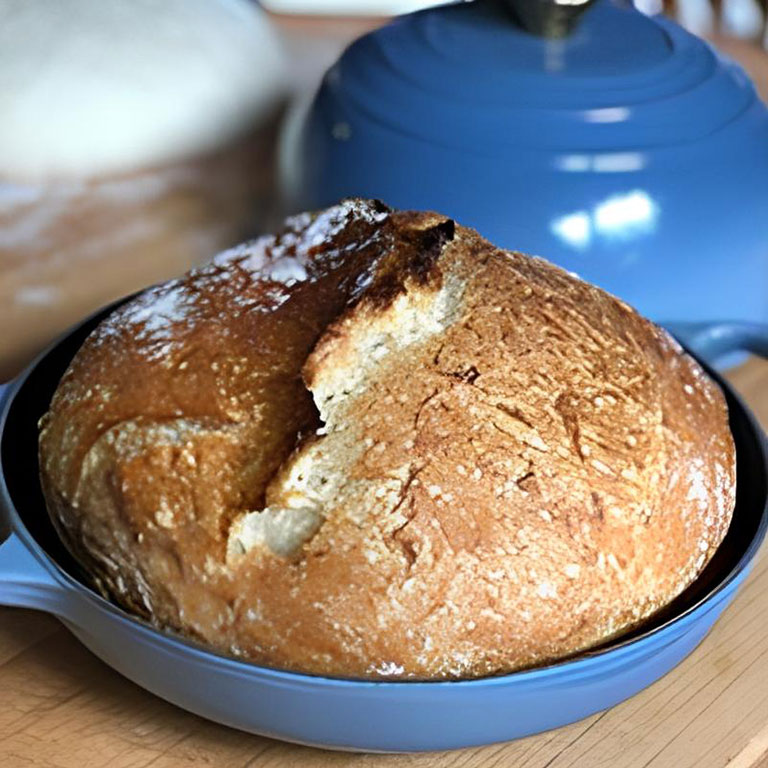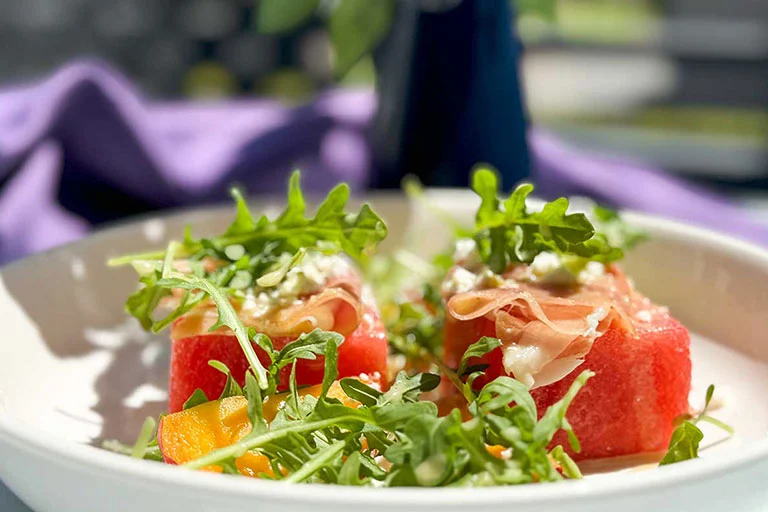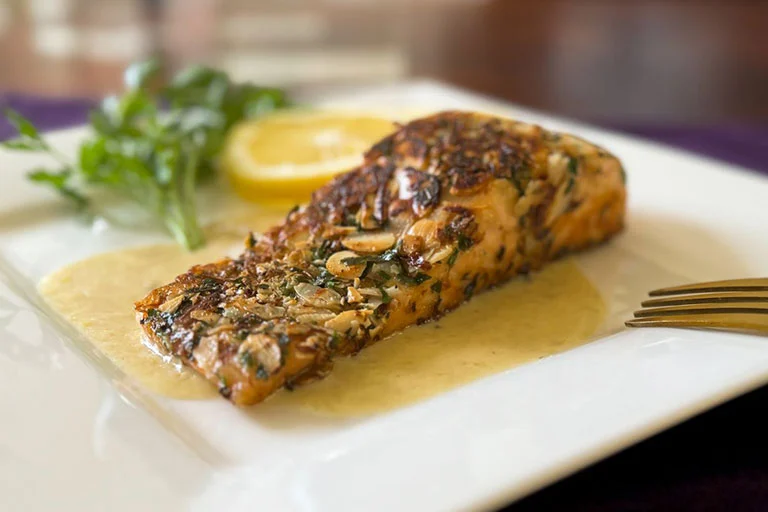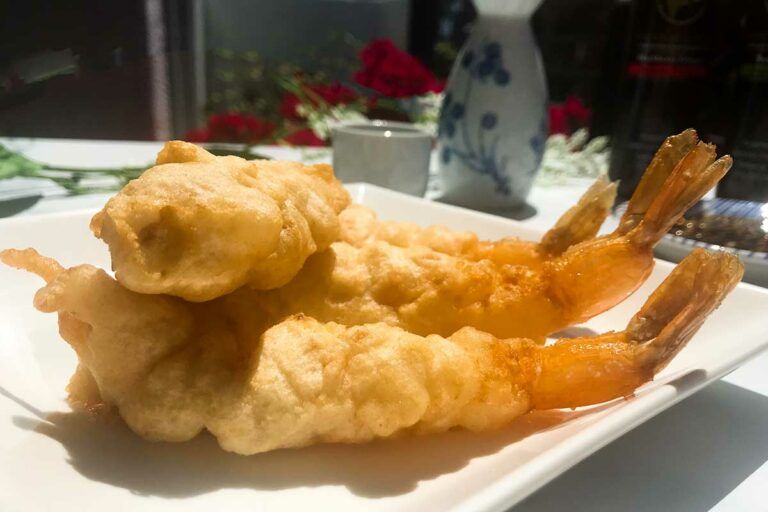
My Curated Tastes is reader-supported. When you buy through links on our site, we may earn an affiliate commission at no extra cost to you. As an Amazon Associate I earn from qualifying purchases.
The recipe looks like there are tons of steps, but there really aren’t. I’ve just detailed it out to make sure your batter is really cold and that you’ve prepped your shrimp to get them straight (rather than curved like American fried shrimp). I love shrimp (in case you haven’t figured that out yet) and this is just another preparation that I’m loving. I’m also pretty fond of how the Japanese prepare seafood and the simplicity in which it is prepared. I make my Japanese Spicy Soy Scallops and Asian Marinated Cod recipes a lot too. Be sure to check them out.
How to make Ebi Tempura (Japanese Shrimp Tempura)
- Let’s get started with making the dipping sauce. Organize all your ingredients and get ready to whisk them together. There are lots of great Asian flavors mixed with the addition of some high quality, flavor infused olive oil and balsamic vinegar. The sweetness of the blackberry in the balsamic vinegar adds a really nice touch to this sauce.
NOTES: If you don’t have the specialty olive oil and vinegar, don’t abandon the recipe. Use plain olive oil with a squeeze of fresh lime juice and plain white balsamic vinegar as substitutions. You’ll still get great flavor from the mix of all the ingredients.
When it comes to the spice in the dipping sauce, you can control the heat with how much of the chili crunch you use. Use more if you want it hotter, less if you don’t like the heat.
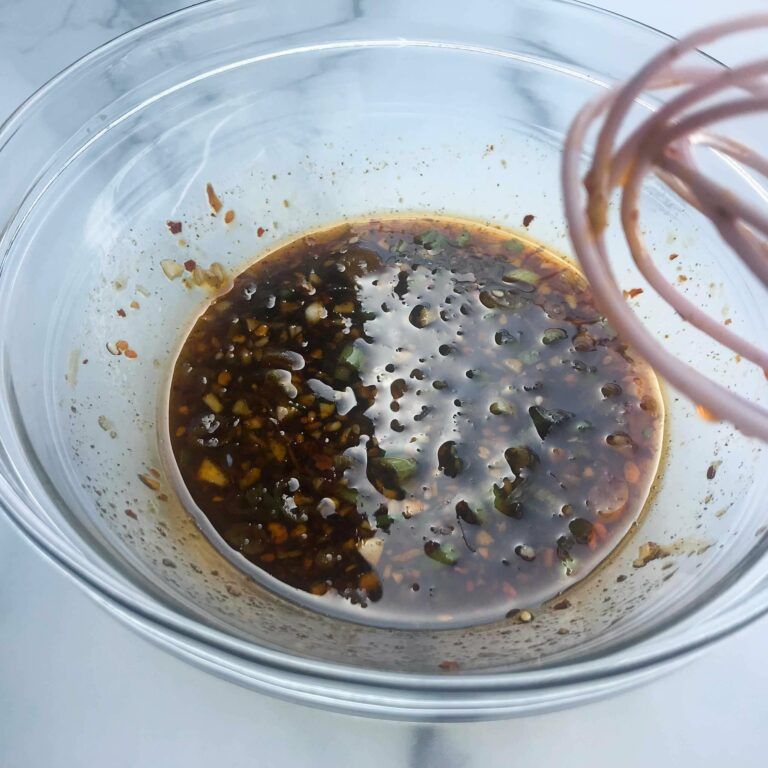
- Let’s prepare the tempura batter ingredients. There is an unusual step for batters. But it really helps get the batter nice and cold which will make the shrimp super crispy. Put your water, sparkling water and the mix of flour and cornstarch in the refrigerator for at least a half hour. I usually just put everything in the fridge the night before so I’m ready to go the next day. Chilling all the ingredients is just a way to keep the batter cold.
- When you are ready to make the batter, you’ll mix the Japanese mayonnaise and a little water in a bowl to loosen it all up. Then add the rest of your plain cold water and the sparkling water to the bowl and stir.
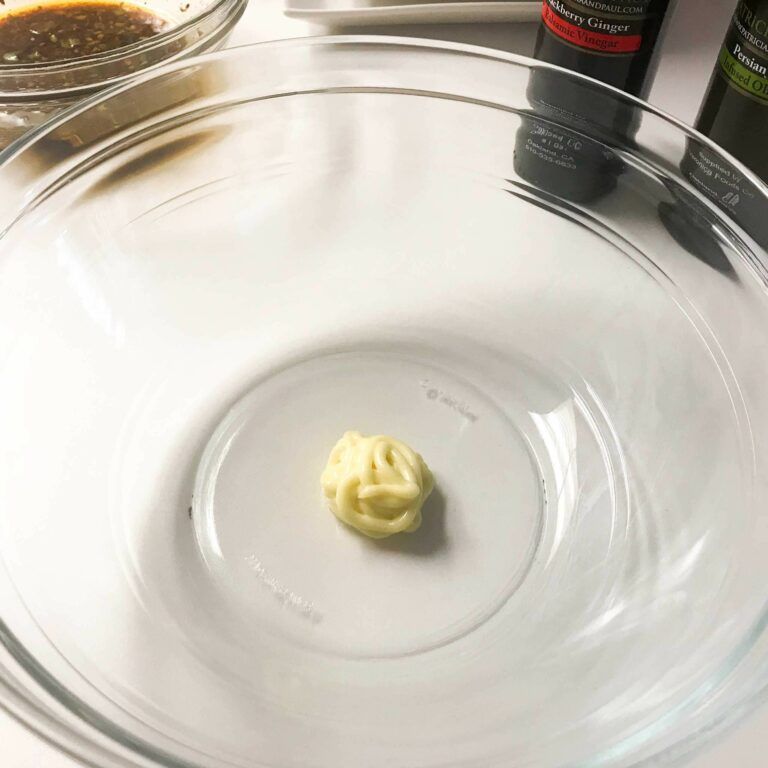
- Start adding your flour and cornstarch mixture about a third at a time until everything is mixed. Don’t over mix this. Having some lumps is fine.
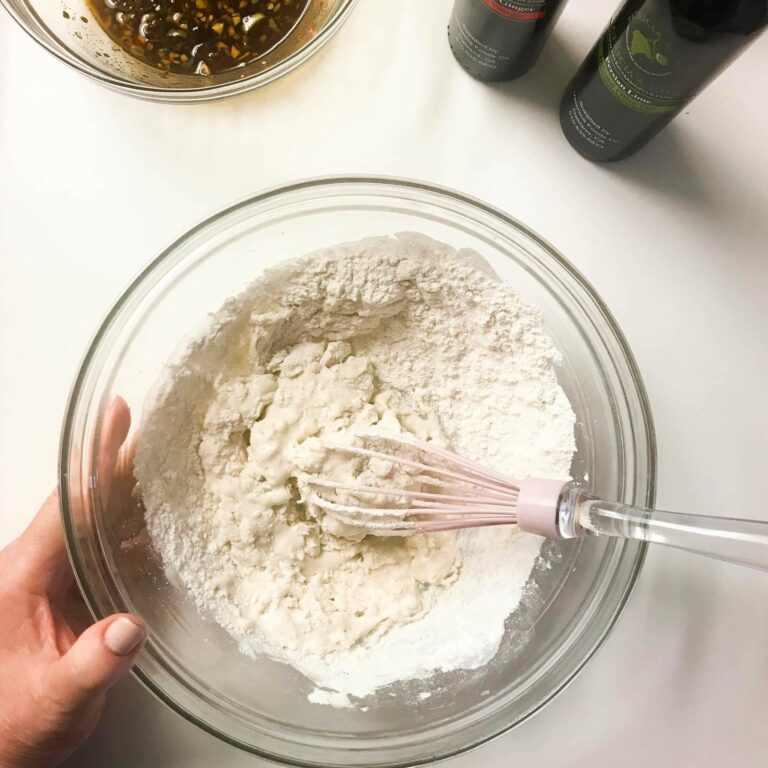
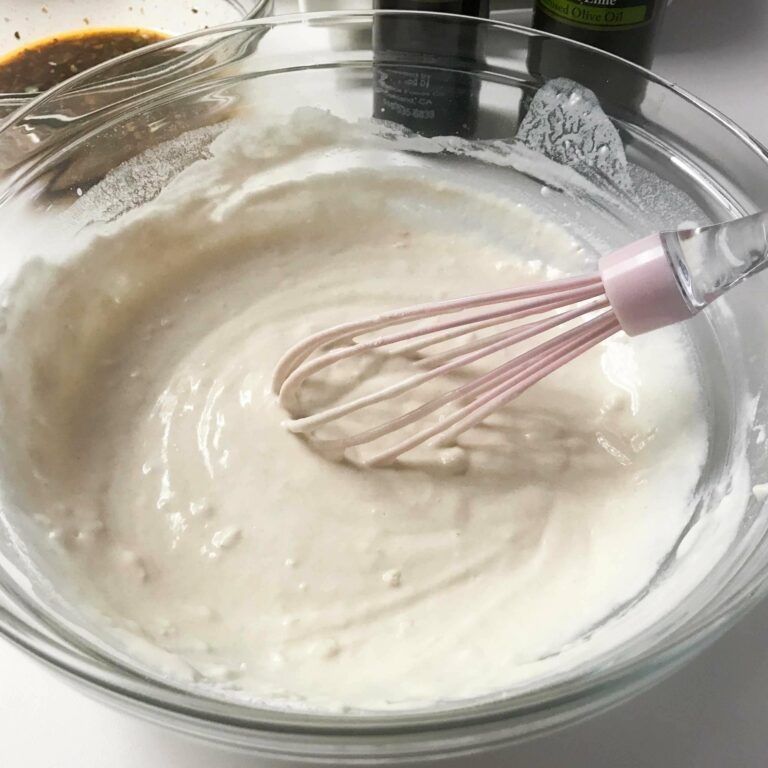
- I’ll also add an ice cube or two to the mix to keep it really cold.
PRO TIP:
If you are making a lot of shrimp or cooking in batches, keep the batter refrigerated in between batches so it stays cold.
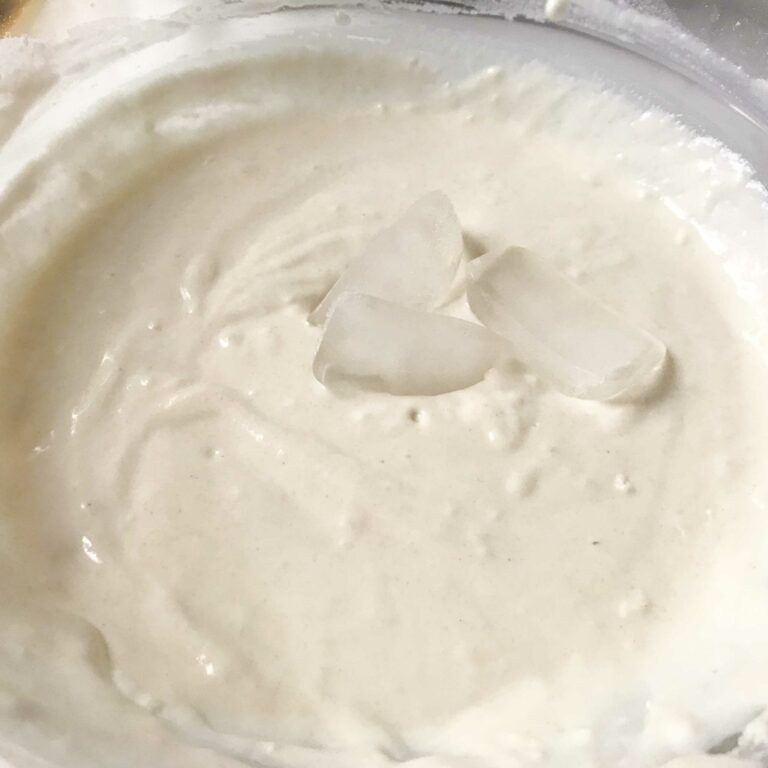
- If you have bought your shrimp already shelled and deveined, you are ready to go. Otherwise, remove the shells and devein the shrimp. Leave the tails on. Dry them with paper towels.
- Another difference between Ebi tempura and American fried shrimp is the shape of the shrimp. Japanese tempura shrimp, are straight, not curved.
- To get the shrimp to stay straight, you need to cut small slits on the underside of the shrimp and lay it out straight. Don’t cut all the way through the shrimp. Make several slits, pressing down on the shrimp to lay it flat.
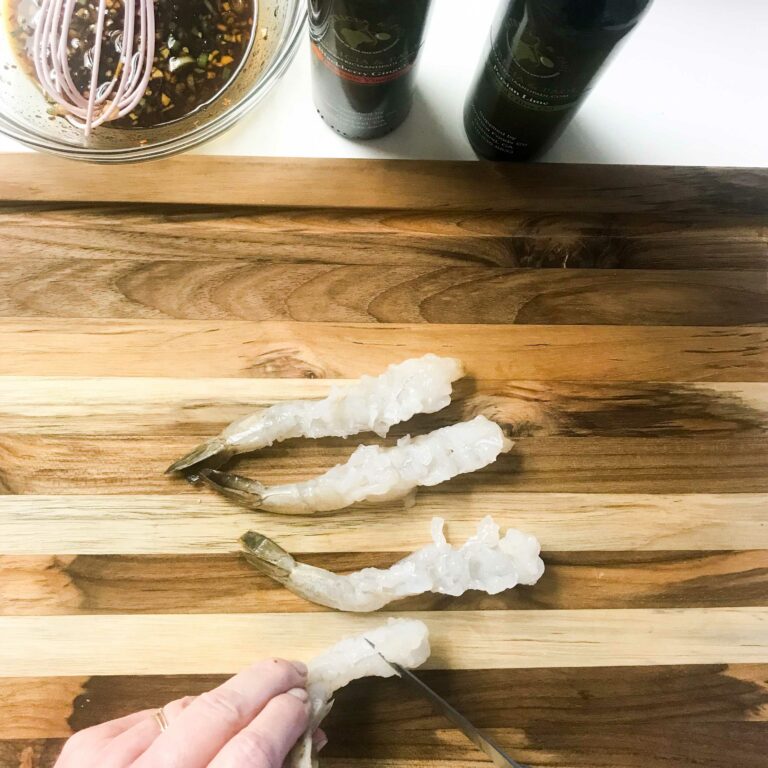
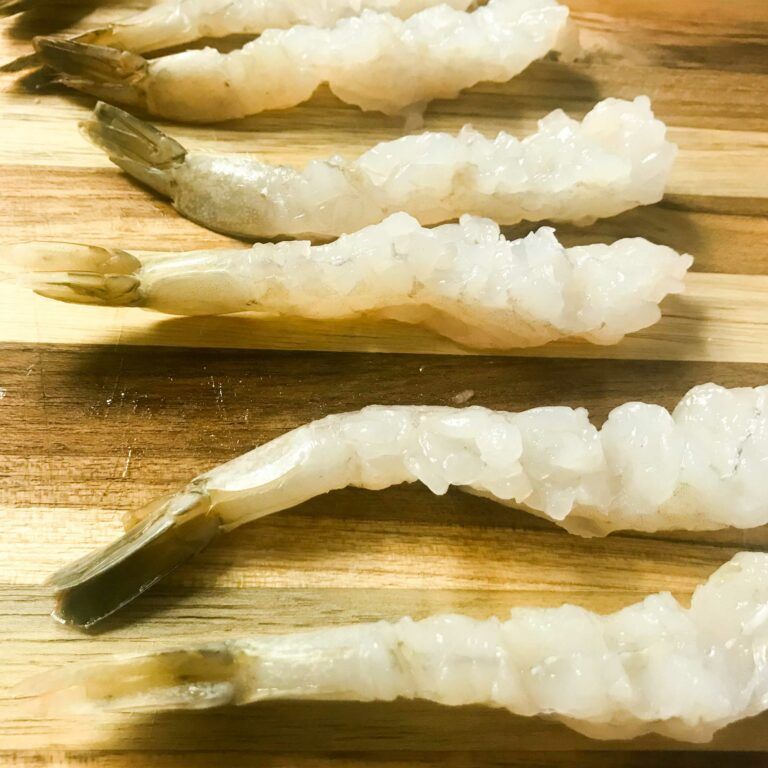
- Once you’ve done this with all the shrimp, you are ready to fry them. Dip them into the batter and completely coat them. Let the excess fall off. Your canola oil should be heated to 355 – 375 degrees F. Check with a thermometer or do the batter drop test. Drop a small amount of batter into the oil and if it fries up immediately, the oil is the right temperature.
- Add the shrimp to the oil and fry for about 2 minutes. Do not crowd the pot. There should be at least two inches of oil in the pot and there should be lots of room for the oil to expand without overflowing. You don’t want the shrimp to turn brown. They should be light in color and super crispy.
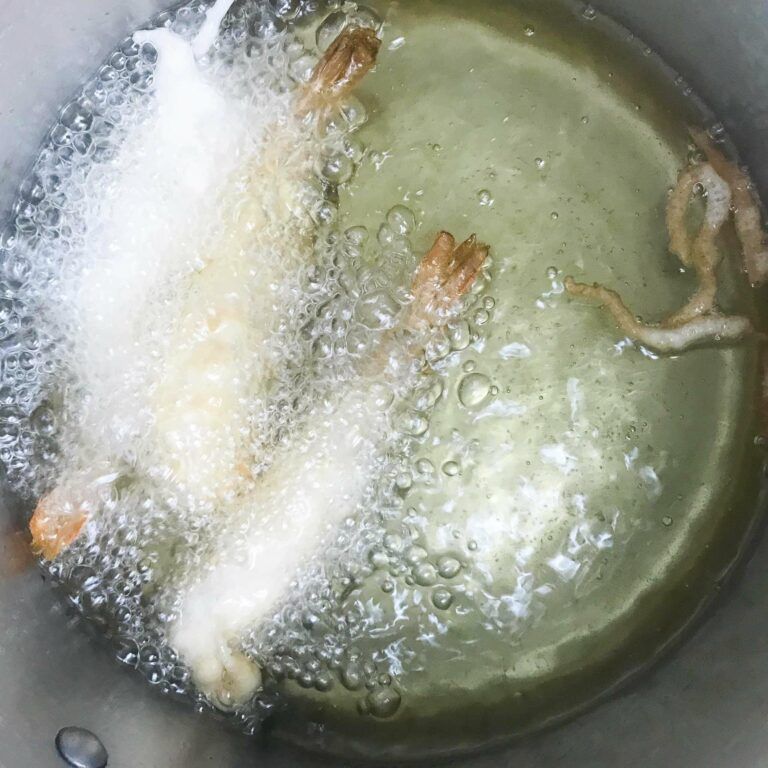
- Place the Ebi tempura on a paper towel lined plate for a minute to let excess oil be absorbed.
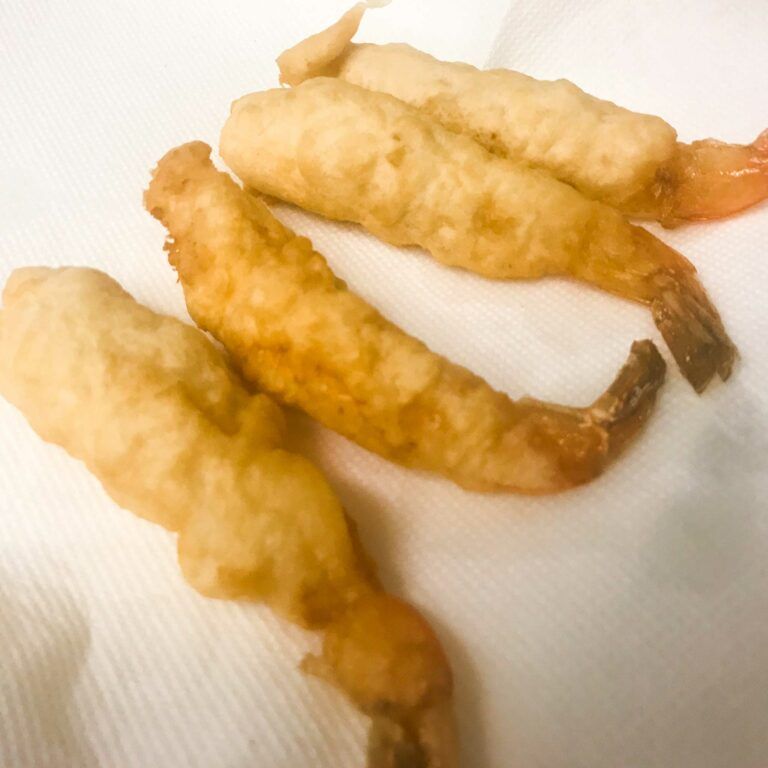
How to serve Ebi Tempura
For an appetizer portion, I’ll serve about four shrimp. If this is a dinner portion, 6-8 is a nice size and I’d add vegetables on the side. You can also use this exact same batter to make tempura vegetables so feel free to have an entire shrimp and veggie tempura party.
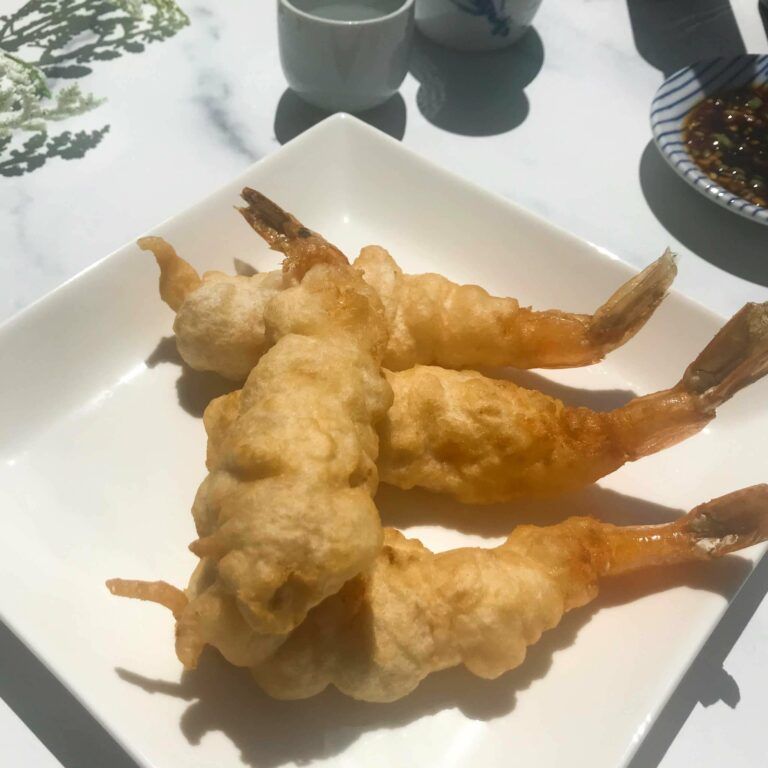
Top FAQs About Ebi Tempura (Japanese Shrimp Tempura)
Here are the most common questions people ask about ebi tempura, the beloved Japanese deep-fried shrimp dish:
Ebi tempura is a Japanese dish consisting of shrimp dipped in a light, airy batter and deep-fried until crispy. “Ebi” means shrimp in Japanese, and tempura refers to the cooking technique of battering and deep-frying seafood or vegetables. It’s typically served with tentsuyu (a dipping sauce made from dashi, mirin, and soy sauce), grated daikon radish, and sometimes lemon.
For authentic ebi tempura, use medium to large-sized shrimp (21/25 or 16/20 count per pound). Black tiger prawns or white shrimp work well. The shrimp should be fresh or properly thawed if frozen. Many Japanese chefs prefer shrimp with the heads still attached for presentation, though this isn’t essential for home cooking.
Proper shrimp preparation is crucial:
- Peel the shrimp, leaving the tail on
- Devein by making a shallow cut along the back
- Make several small cuts along the belly side to prevent curling
- Gently straighten each shrimp and press lightly on a cutting board
- Pat very dry with paper towels (moisture prevents crispy batter)
- Lightly dust with flour before dipping in batter
Traditional tempura batter is surprisingly simple:
- 1 part cold egg (beaten)
- 2 parts ice-cold water
- 2 parts all-purpose flour
The keys to perfect batter are:
- Using very cold ingredients (some chefs even place the bowl over ice)
- Mixing minimally (lumps are good!)
- Making the batter just before frying
- Refer to the exact recipe in this post
The secrets to perfect crispy tempura include:
- Oil temperature between 340-350 degrees F (170-180°C)
- Using fresh oil specifically good for high-heat cooking (like canola or rice bran oil)
- Not overcrowding the pot (fry in small batches)
- Brief cooking time (about 2 minutes until golden)
- Proper draining on a wire rack or paper towels
- Serving immediately after cooking
To ensure the batter adheres properly:
- Make sure the shrimp are completely dry before flouring
- Dust with flour before dipping in batter
- Don’t let battered shrimp sit too long before frying
- Slide the shrimp into the oil gently, away from you
- Maintain proper oil temperature
Traditional tentsuyu dipping sauce consists of:
- 1 cup dashi (Japanese seafood stock)
- 3 tablespoons mirin
- 3 tablespoons soy sauce
- Optional: grated ginger
Serve with freshly grated daikon radish on the side, which adds a refreshing counterpoint to the fried shrimp. Some people also enjoy a simple salt or green tea salt for dipping. I went “wild” and created my own dipping sauce but you can decide on traditional vs. something a little more modern.
The most common tempura mistakes include:
- Using batter that’s too thick or overmixed (creates heavy, doughy coating)
- Frying at too low a temperature (results in greasy tempura)
- Overcrowding the oil (drops temperature and causes uneven cooking)
- Making the batter too far in advance (should be made just before frying)
- Not properly preparing the shrimp (causes curling and uneven cooking)
Ebi tempura works well in various Japanese meals:
- As part of a tempura platter with vegetable tempura, rice, miso soup, and pickles (use the same batter in this recipe to try up cut veggies)
- With cold soba or udon noodles and dipping sauce
- As part of a larger Japanese meal with sushi, sashimi, and small side dishes
If you’re hesitant about deep-frying:
- Use a deep, heavy pot rather than a shallow pan to minimize splatter
- Fill the pot no more than 1/3 full with oil
- Use a thermometer to monitor temperature accurately
- Keep a lid nearby in case of fire
- Try using an air fryer (though results will differ from traditional tempura)
- Consider a tempura-specific countertop fryer with temperature control
Remember that authentic tempura is about technique and simplicity—quality ingredients prepared with care will yield delicious results!
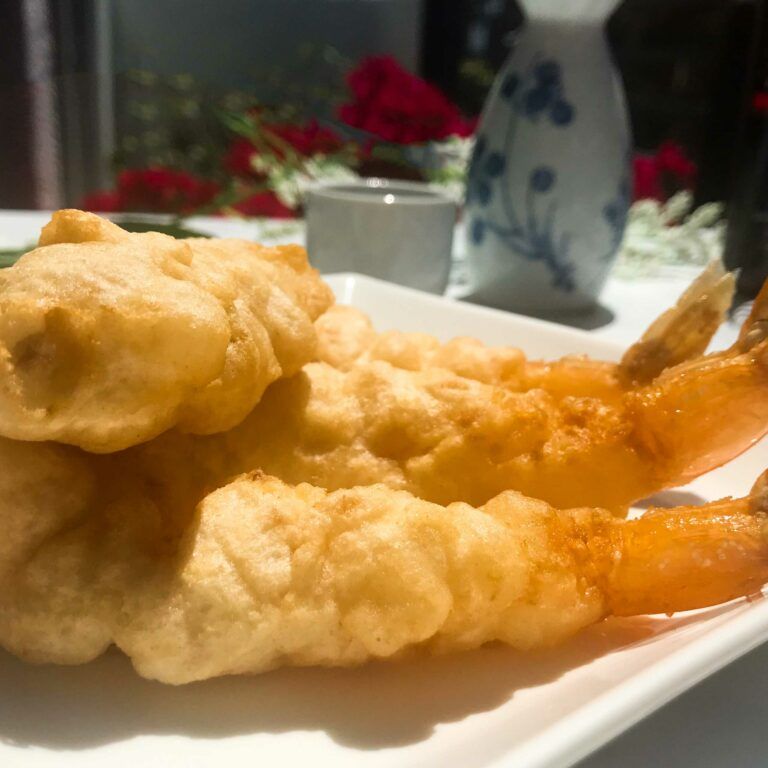
You can also serve your shrimp on a platter with the dipping sauce in a small bowl on the side – family style. Let everyone help themselves. Enjoy.
If you liked this dish, be sure leave a comment and rating below. The do try some of my other Asian inspired recipes.

Ebi Tempura (Japanese Shrimp Tempura) With Ginger And Lime Dipping Sauce
Nutritional information is only an estimate. The accuracy of the nutritional information for any recipe on this site is not guaranteed.
Ingredients
- 1 Lb. Large Tiger Shrimp, peeled and deveined and tail on
- Tempura batter
- Canola Oil for frying
- Ginger and Lime Dipping Sauce
TEMPURA BATTER
- 1 Cup All-purpose flour
- ½ Tbsp. Japanese Mayonnaise mixed with splash of water
- 3 Oz. Ice water
- 4-6 Oz. Sparkling water
- 1 Tbsp. Corn starch
- Ice cubes
DIPPING SAUCE
- 1 Lime, juiced
- 1 Tbsp. Honey
- 1 Tbsp. Patricia and Paul’s Lime infused olive oil Or olive oil with a squeeze of fresh lime juice
- 1 Tbsp. Patricia and Paul’s Blackberry Ginger Balsamic Vinegar Or use just white balsamic vinegar
- 1 Tbsp. Fish sauce
- 1 Tsp. Soy sauce
- 1 Large Garlic clove, minced
- ½ Tsp. Fresh ginger, grated
- ½ Tsp. Chili crunch oil
- 1 Green onion, sliced
Instructions
- Make your dipping sauce. Whisk all the ingredients in a bowl and let sit for at least ½ hour to let the flavors marry. Whisk again before serving.
- Add enough oil to a large pot so that you have at least two inches of oil. Heat until it is 355 – 375 degrees F.
- Prep your tempura batter ingredients. You want everything to be very cold. Start by having your water and sparkling water in the refrigerator and ice cold. Sift the flour and cornstarch into a bowl and put that in the refrigerator for at least ½ hour to chill.
- While your tempura batter ingredients are chilling, prep the shrimp by removing the shells and deveining the shrimp. (You can often buy them already prepped to this point saving you time.)
- Place the shrimp on a cutting board and working with one shrimp at a time, hold the shrimp so its underside is facing up (the tail and the cut ends will face up), and using a little paring knife, cut small slices along the whole shrimp so that the shrimp lays flat rather remaining curled. Don’t cut all the way through. Straighten out the shrimp and put it to the side. Do this with all the shrimp.
- Make the tempura batter. In a large bowl, add the Japanese mayonnaise and a few tablespoons of the chilled water. Whisk until it is well combined and loose. Add the rest of the cold water and about 2 ounces of the sparkling water to the bowl. Start adding the chilled flour and cornstarch mixture a third at a time. Mix gently. Don’t over mix. Add additional sparkling water as needed to create a thick pancake batter consistency. Add a couple of ice cubes to the mix to keep it ice cold.
- Check your oil to make sure it is the right temperature. (355 – 375 degrees F)Use a thermometer or do the batter test. Drop a little batter into the oil and when it fries up immediately, it is ready.
- Dry the shrimp with a paper towel again. Dip them in the batter and then carefully place them into the oil. Make sure not to overfill the pot. (Keep the batter cold in the refrigerator between batches if necessary.)
- Fry for about 2 minutes or until crispy but don’t let them get brown. Tempura should be light in color and really crispy.
- Once cooked, place on a paper towel lined plate for just a minute to remove excess oil.
- Serve the shrimp on a platter with a bowl of the dipping sauce on the side. Enjoy!






